Fine Roman Marble Torso of ‘Doryphoros’
A Fine Roman Marble Torso of ‘Doryphoros’ Modelled as a Standing Naked Warrior his upper body elegantly curved in order to balance a spear over his left shoulder
The surface has been cleaned slightly and lightly re-worked in the late 18th / early 19th century removing the ‘puntello’ on the figures right hip which would originally have supported the position of the right arm
Marble
Italy
1st / 2nd Century AD
SIZE: 16.5cm high, 9cm wide, 5cm deep - 6½ ins high, 3½ ins wide, 2 ins deep
The surface has been cleaned slightly and lightly re-worked in the late 18th / early 19th century removing the ‘puntello’ on the figures right hip which would originally have supported the position of the right arm
Marble
Italy
1st / 2nd Century AD
SIZE: 16.5cm high, 9cm wide, 5cm deep - 6½ ins high, 3½ ins wide, 2 ins deep
A Fine Roman Marble Torso of ‘Doryphoros’ Modelled as a Standing Naked Warrior his upper body elegantly curved in order to balance a spear over his left shoulder
The surface has been cleaned slightly and lightly re-worked in the late 18th / early 19th century removing the ‘puntello’ on the figures right hip which would originally have supported the position of the right arm
Marble
Italy
1st / 2nd Century AD
SIZE: 16.5cm high, 9cm wide, 5cm deep - 6½ ins high, 3½ ins wide, 2 ins deep
The surface has been cleaned slightly and lightly re-worked in the late 18th / early 19th century removing the ‘puntello’ on the figures right hip which would originally have supported the position of the right arm
Marble
Italy
1st / 2nd Century AD
SIZE: 16.5cm high, 9cm wide, 5cm deep - 6½ ins high, 3½ ins wide, 2 ins deep
The missing bronze prototype of the ‘Doryphoros’ sculpture, portrayed somewhat larger than life-size, would have been cast around 440 BC, however it is currently only recognised from later (mostly Roman era) marble copies. Polykleitos, a prominent Greek sculptor, created a sculptural piece as a presentation of his textual treatise that illustrated what he regarded to be the absolutely balanced and harmonious dimensions of the human body in the sculptural form.
The Greek medical author Galen remarked about the ‘Doryphoros’ in the 2nd century AD as the ideal aesthetic embodiment of the Greeks’ yearning for balance and elegance, which is expressed in the ideally proportionate carved male nude. Chrysippus believes that beauty consists not in the ratios or commensurability of the component aspects of the body, but in the paired comparison of the sections, such as that of palm to palm, and of all the digits to the palms and wrists, and those to the forearms, and of the forearms to the upper arms, and, in reality, of all of it to everything else, as written in Polykleitos’ canon.
The marble statue and bronze head discovered at Herculaneum were not recognised as Polykleitos’ work until 1863. A partial ‘Doryphoros’ body in basalt, in the Medici collections at the Uffizi ‘expresses the appearance of bronze and is done with exceptional care, it maintains some of the intensity and focus of the predecessor’ as Kenneth Clark observed, absent in the full-size ‘boxy’ marble copies. The best-known version of the ‘Doryphoros’ was discovered in Pompeii and is housed in Naples’ Museo Nazionale. A bronze herma of Apollonios, also housed in the museum, is regarded by many experts to be an almost faultless reproduction of the genuine ‘Doryphoros’ head.
The Greek medical author Galen remarked about the ‘Doryphoros’ in the 2nd century AD as the ideal aesthetic embodiment of the Greeks’ yearning for balance and elegance, which is expressed in the ideally proportionate carved male nude. Chrysippus believes that beauty consists not in the ratios or commensurability of the component aspects of the body, but in the paired comparison of the sections, such as that of palm to palm, and of all the digits to the palms and wrists, and those to the forearms, and of the forearms to the upper arms, and, in reality, of all of it to everything else, as written in Polykleitos’ canon.
The marble statue and bronze head discovered at Herculaneum were not recognised as Polykleitos’ work until 1863. A partial ‘Doryphoros’ body in basalt, in the Medici collections at the Uffizi ‘expresses the appearance of bronze and is done with exceptional care, it maintains some of the intensity and focus of the predecessor’ as Kenneth Clark observed, absent in the full-size ‘boxy’ marble copies. The best-known version of the ‘Doryphoros’ was discovered in Pompeii and is housed in Naples’ Museo Nazionale. A bronze herma of Apollonios, also housed in the museum, is regarded by many experts to be an almost faultless reproduction of the genuine ‘Doryphoros’ head.
Ex Private collection, Bavaria, Germany, acquired in the 20th Century (originally mounted in the 19th Century on a Roman marble architectural fragment re-purposed as a display base)
Fine Roman Marble Torso of ‘Doryphoros’
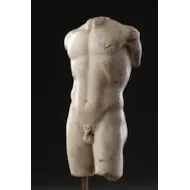
SOLD
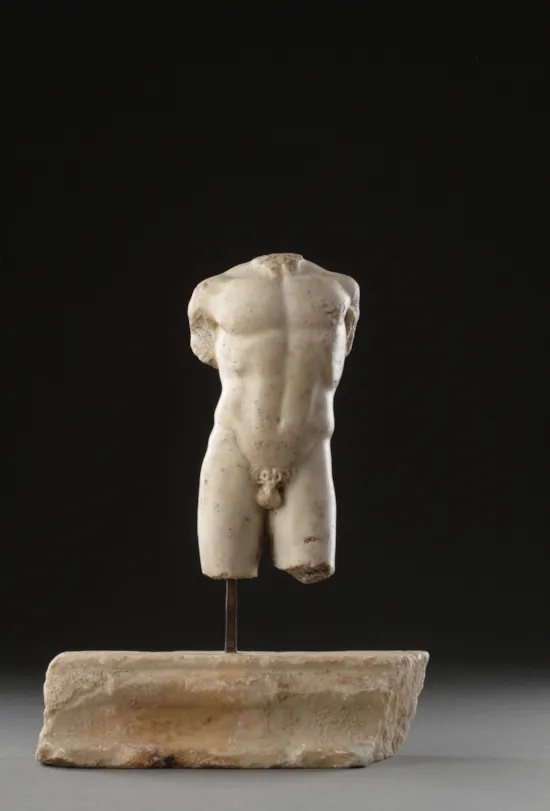
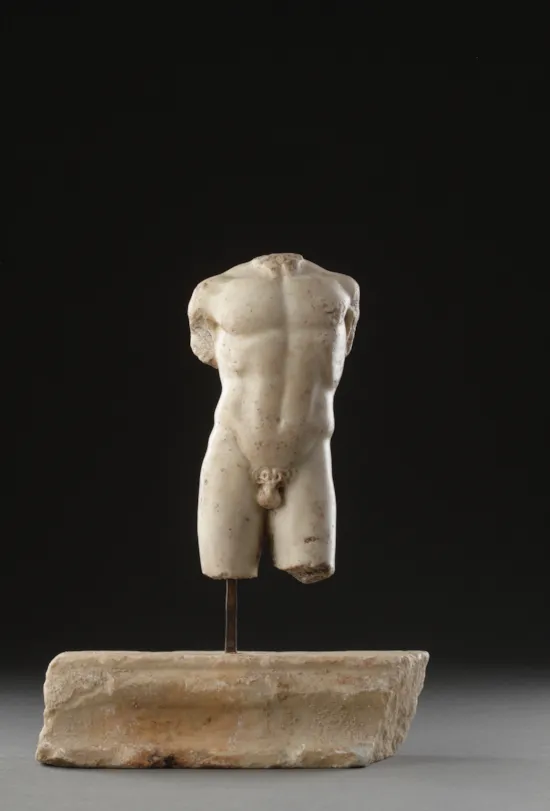
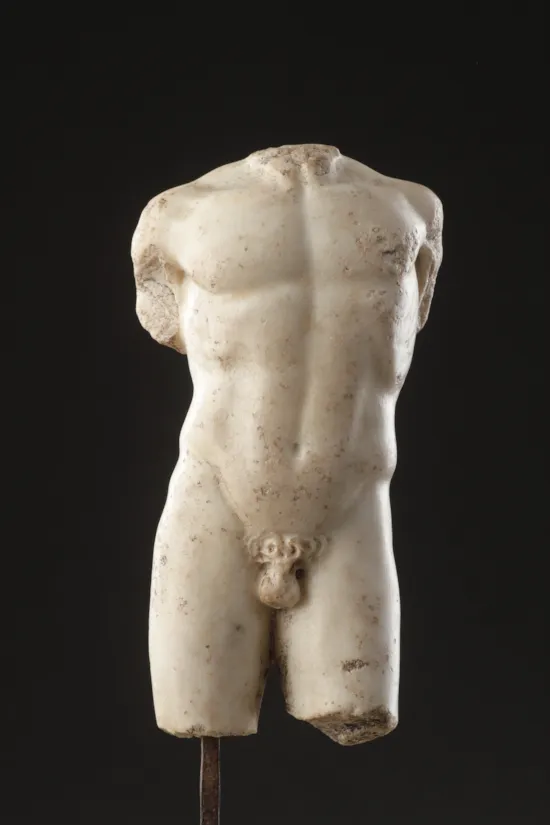
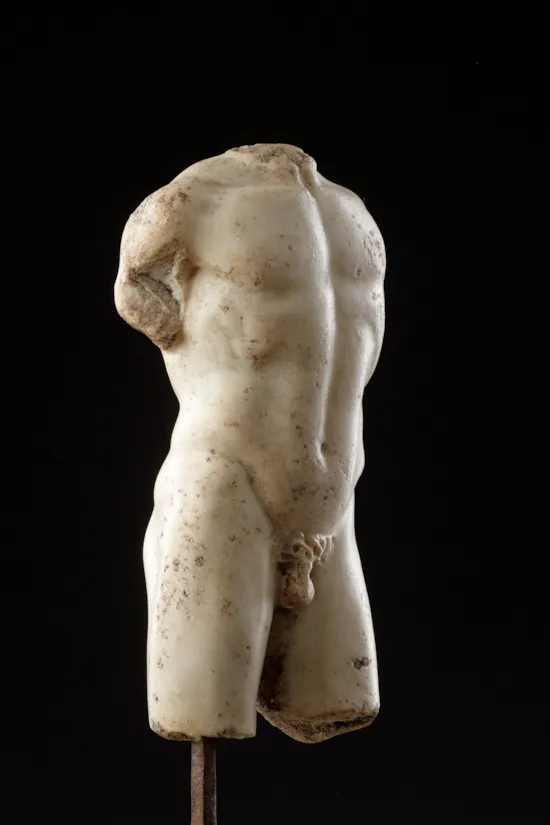
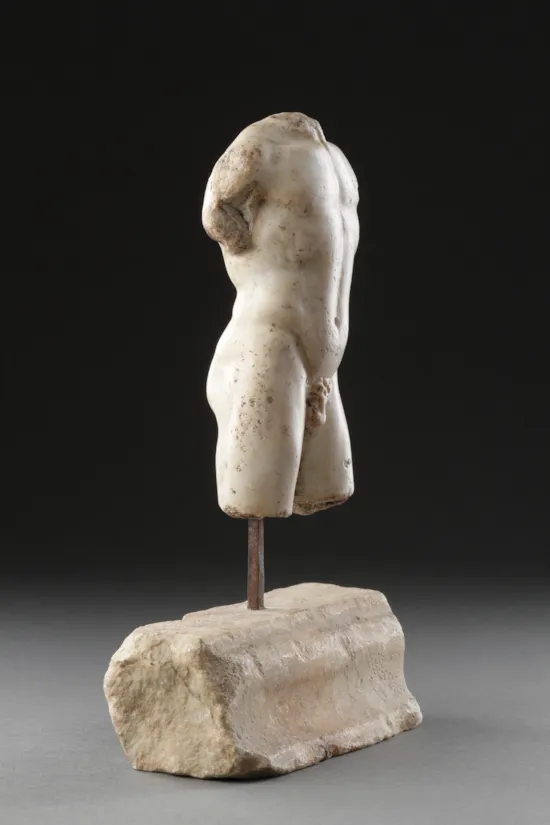
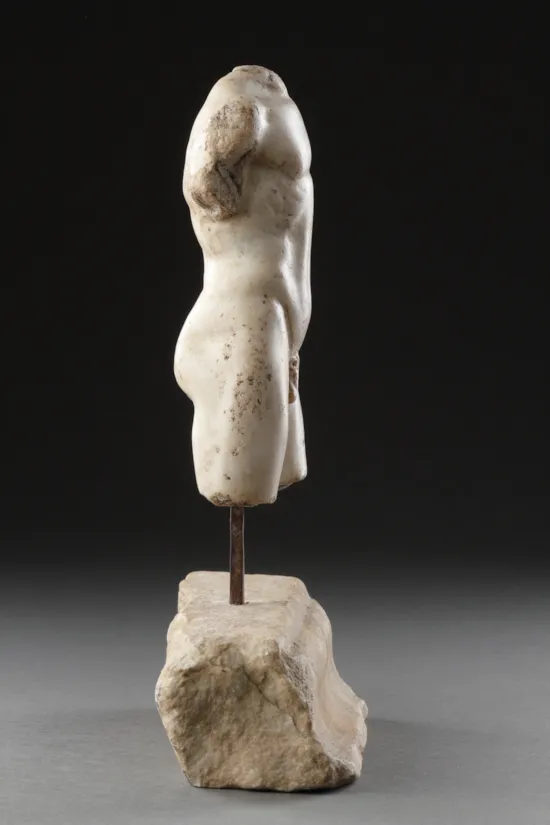
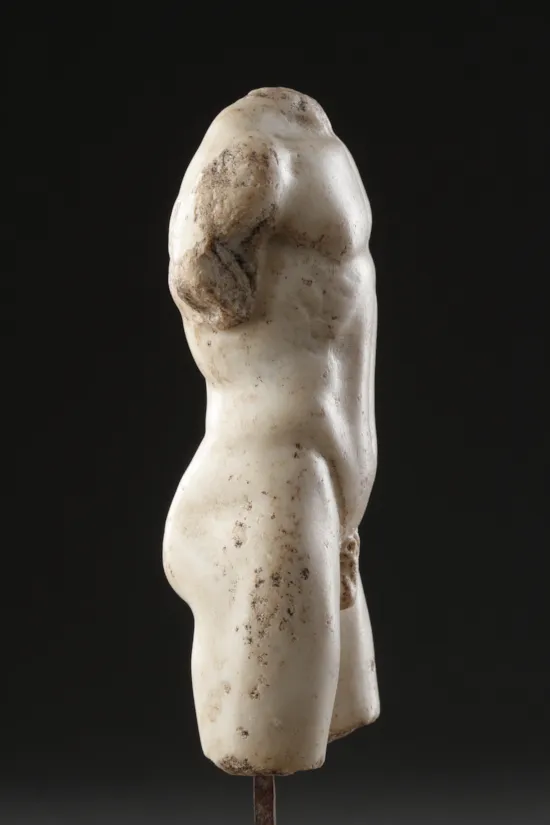
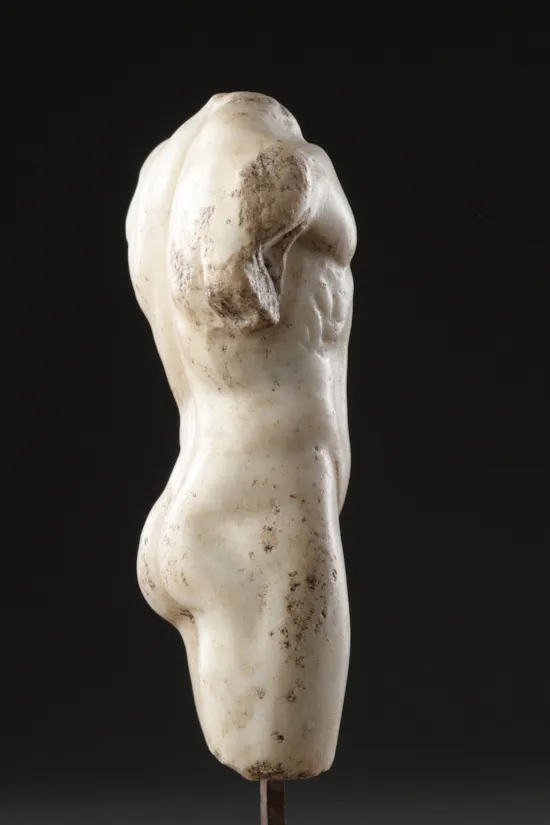
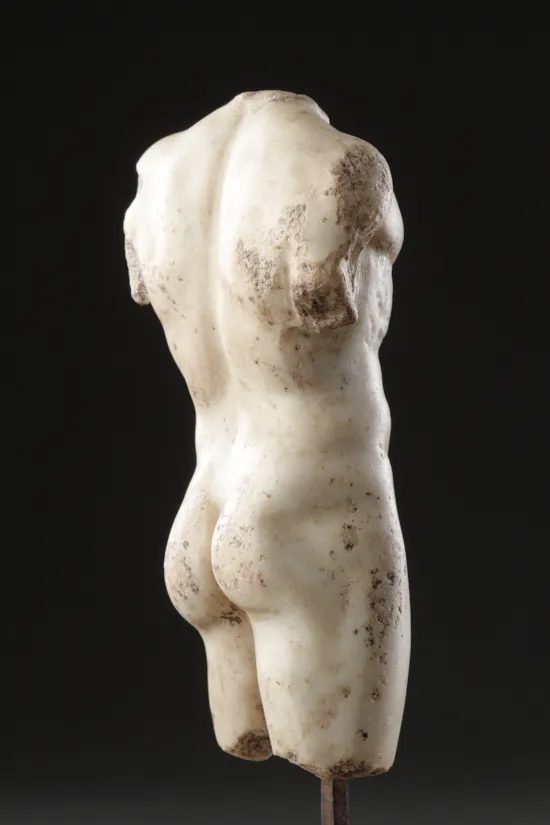
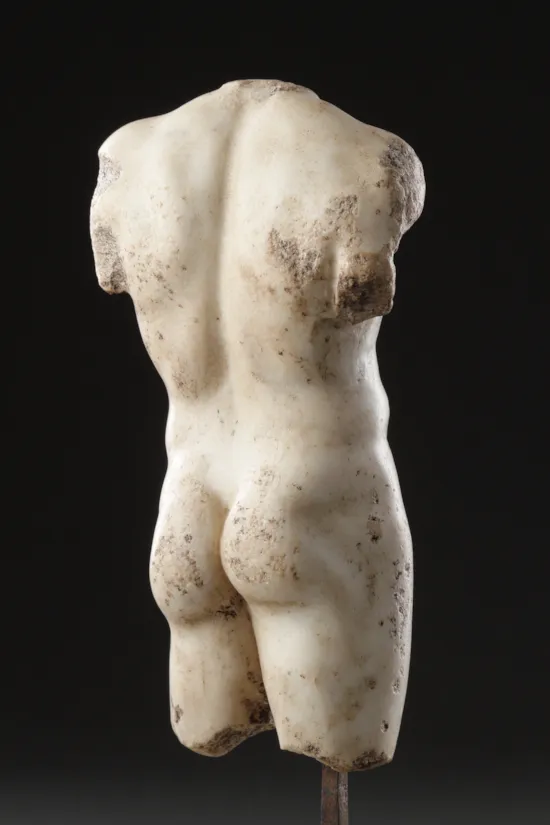
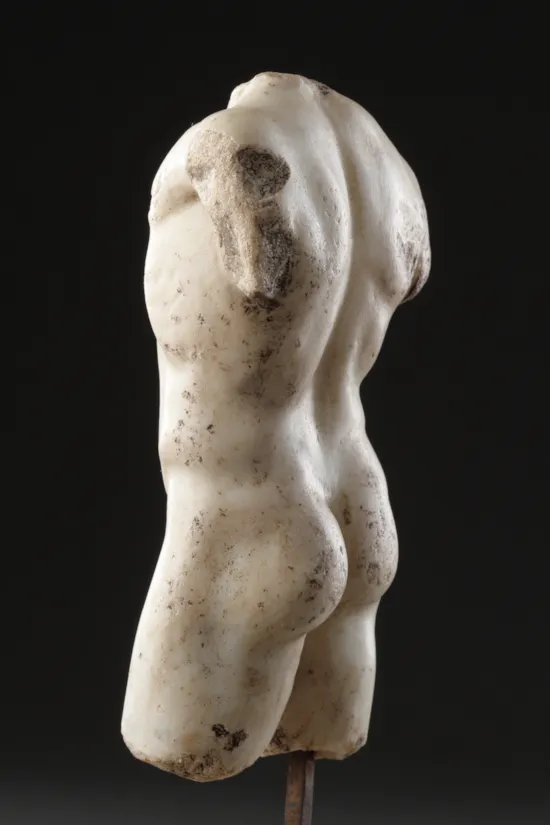
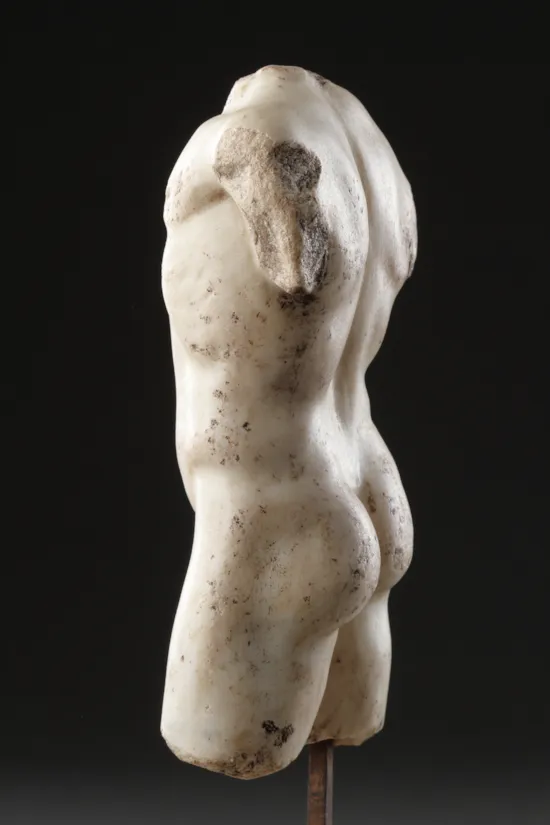
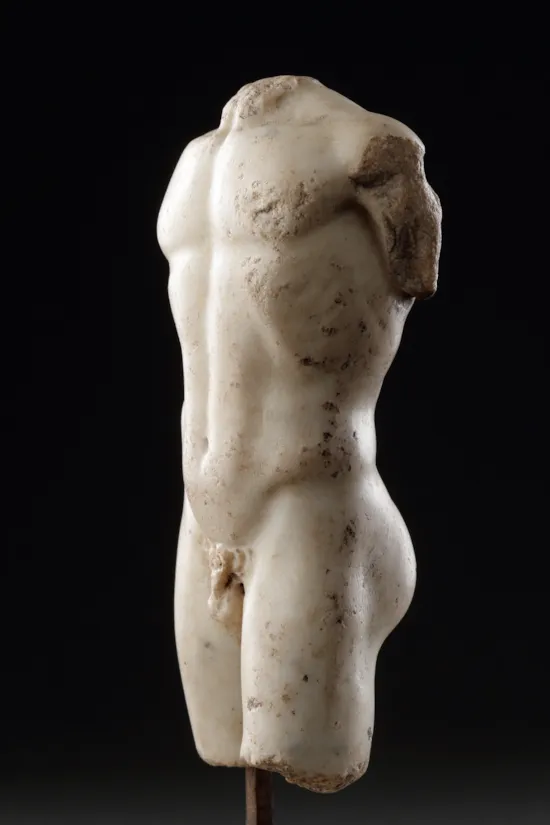
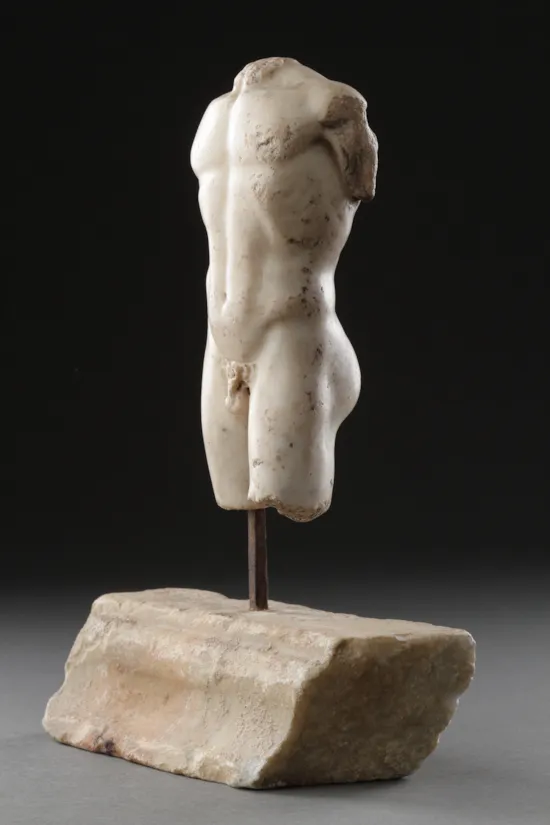
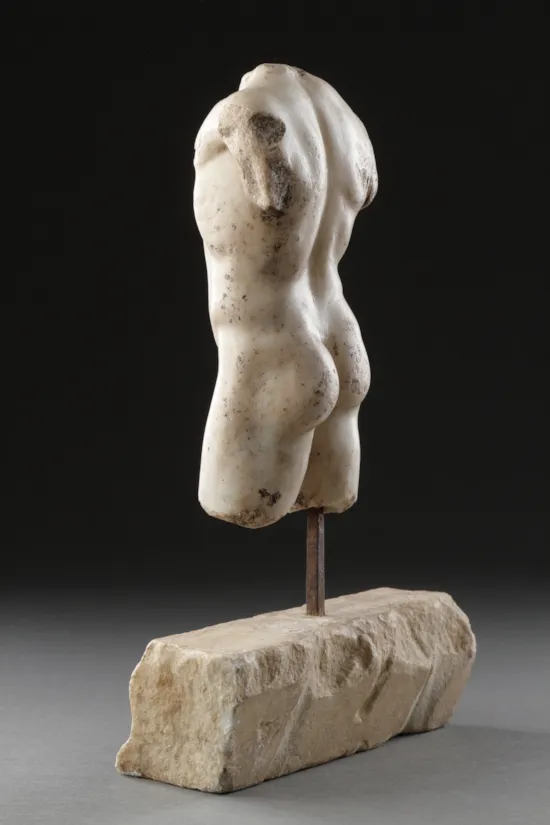















YOU MAY ALSO LIKE

